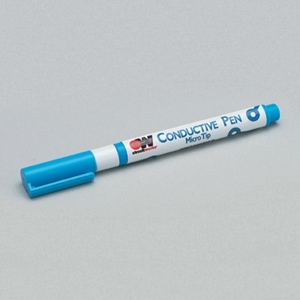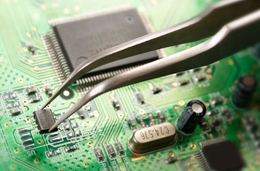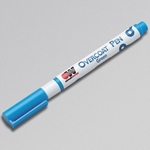CircuitWorks Conductive Pens
CircuitWorks® Conductive Pens make instant highly conductive silver traces on circuit boards and are used in prototype, rework, and repair of circuit boards by linking components, repairing defective traces, making smooth jumpers. The silver traces of the circuit pen dry in minutes and have excellent adhesion to most electronic materials. Engineers, repair technicians, and manufacturers will find that the CircuitWorks® Conductive Circuit Pen speeds project completion and cuts rework time.
CircuitWorks Conductive Pens are available in 3 types of inks:
- Silver Conductive Pen (CW2200MTP): Highly conductive and the most popular option. Available with the micro tip (CW2200MTP).
Conductivity - 0.02-0.05 ohms/sq/mil - Silver Flex Conductive Pen (CW2900): Also silver-based, and engineered for flexible PCBs. Only available with the standard tip.
Condictivity - 0.05-0.15 ohms/sq/mil - Nickel Conductive Pen (CW2000): Lower cost nickel-based ink. Only available with the standard tip.
Conductivity - 1.0 – 1.5 ohms/sq/mil
Features & Benefits
- Quickly creates conductive silver traces
- Valve pen tip for easy applications
- Solderable at low temperatures
- Superior electrical conductivity
- Dries in minutes at room temperature
- Choice of Micro Tip (MTP) for fine lines or Standard Tip (STP) for wider lines
Applications
- Repairs traces
- Links components
- Makes smooth jumpers
- Shields electronics
| Shelf Life | 15 mo. |
|---|---|
| Shipping Name | Consumer Commodity ORM-D |
| Specs | ANSI/IPC J STD-001, IPC-7711 |
| NSN | CW2200MTP - 6850-01-506-5662 |









